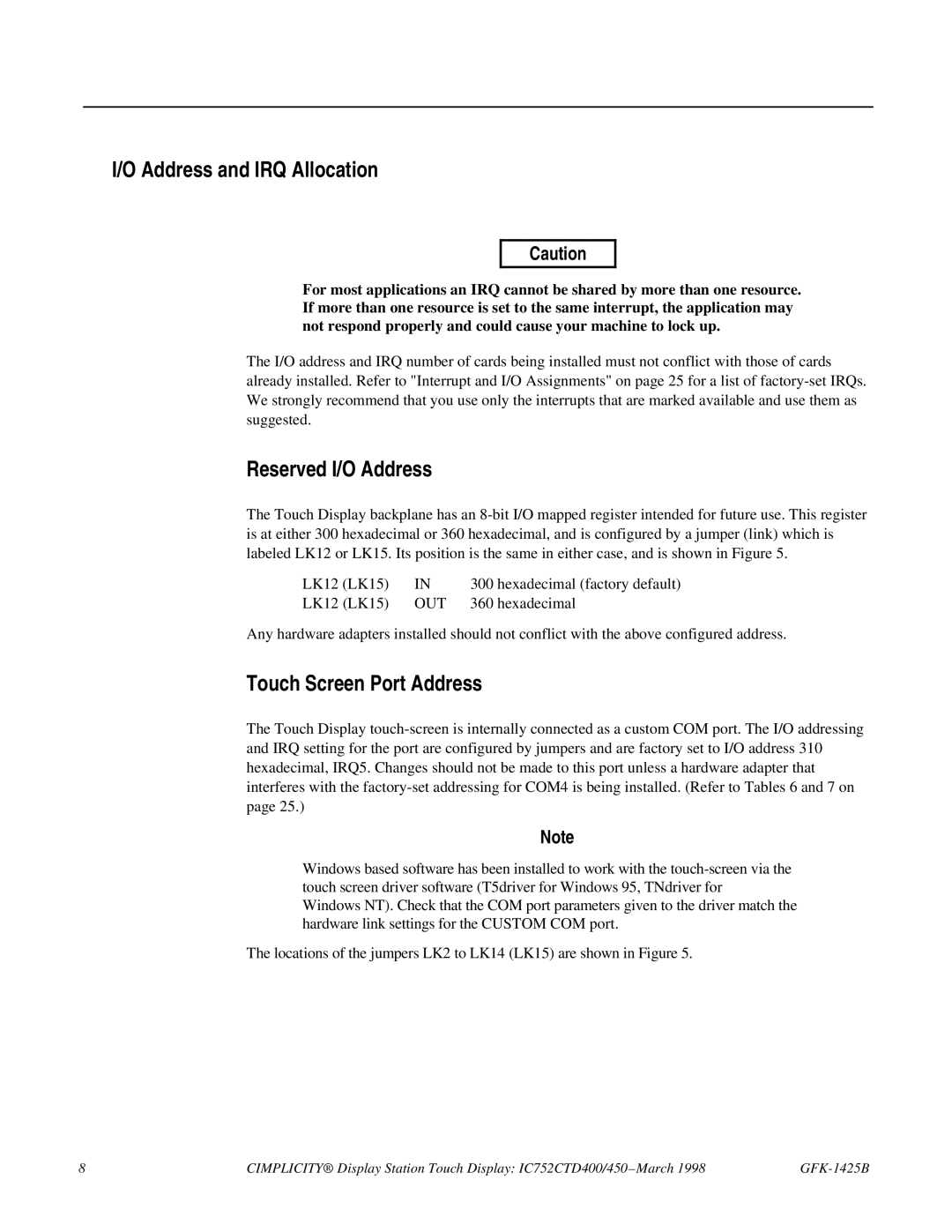I/O Address and IRQ Allocation
Caution
For most applications an IRQ cannot be shared by more than one resource. If more than one resource is set to the same interrupt, the application may not respond properly and could cause your machine to lock up.
The I/O address and IRQ number of cards being installed must not conflict with those of cards already installed. Refer to "Interrupt and I/O Assignments" on page 25 for a list of factory-set IRQs. We strongly recommend that you use only the interrupts that are marked available and use them as suggested.
Reserved I/O Address
The Touch Display backplane has an 8-bit I/O mapped register intended for future use. This register is at either 300 hexadecimal or 360 hexadecimal, and is configured by a jumper (link) which is labeled LK12 or LK15. Its position is the same in either case, and is shown in Figure 5.
LK12 (LK15) | IN | 300 hexadecimal (factory default) |
LK12 (LK15) | OUT | 360 hexadecimal |
Any hardware adapters installed should not conflict with the above configured address.
Touch Screen Port Address
The Touch Display touch-screen is internally connected as a custom COM port. The I/O addressing and IRQ setting for the port are configured by jumpers and are factory set to I/O address 310 hexadecimal, IRQ5. Changes should not be made to this port unless a hardware adapter that interferes with the factory-set addressing for COM4 is being installed. (Refer to Tables 6 and 7 on page 25.)
Note
Windows based software has been installed to work with the touch-screen via the touch screen driver software (T5driver for Windows 95, TNdriver for Windows NT). Check that the COM port parameters given to the driver match the hardware link settings for the CUSTOM COM port.
The locations of the jumpers LK2 to LK14 (LK15) are shown in Figure 5.
8 | CIMPLICITY® Display Station Touch Display: IC752CTD400/450 – March 1998 | GFK-1425B |

